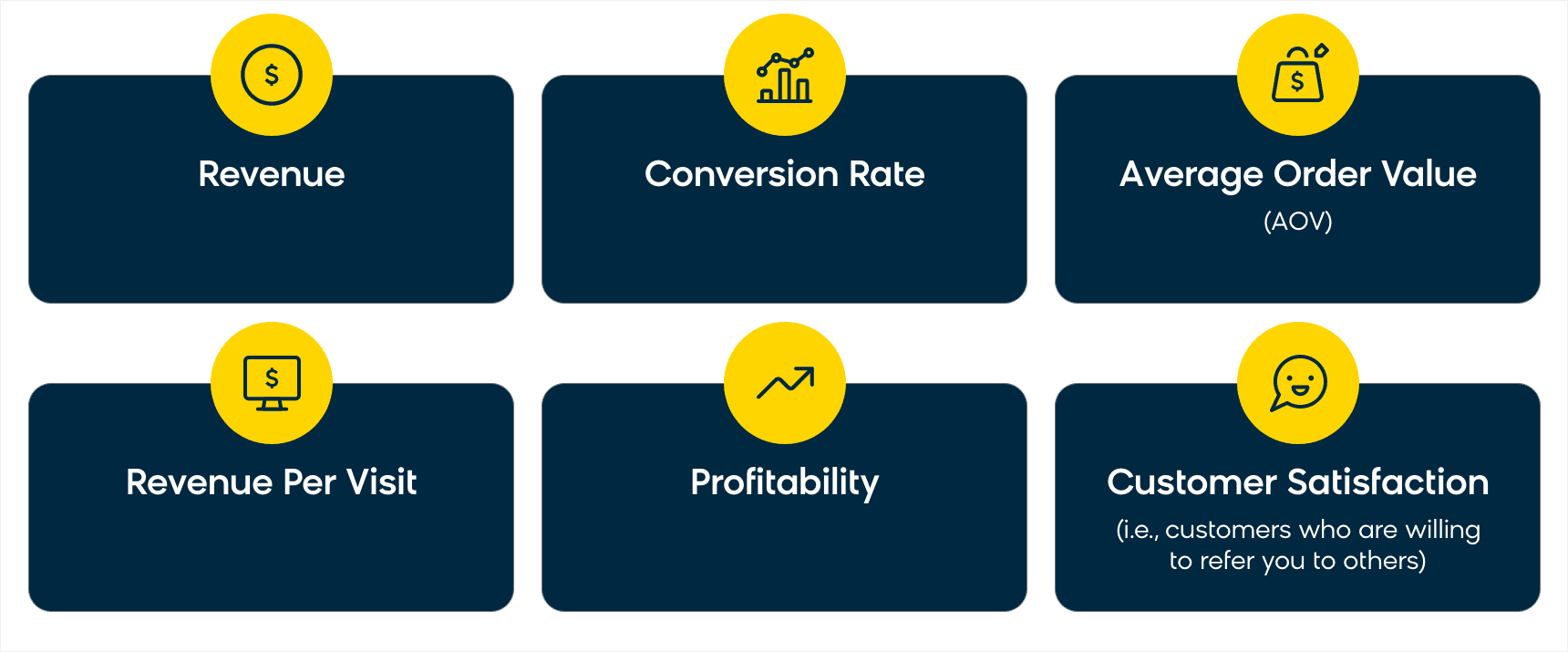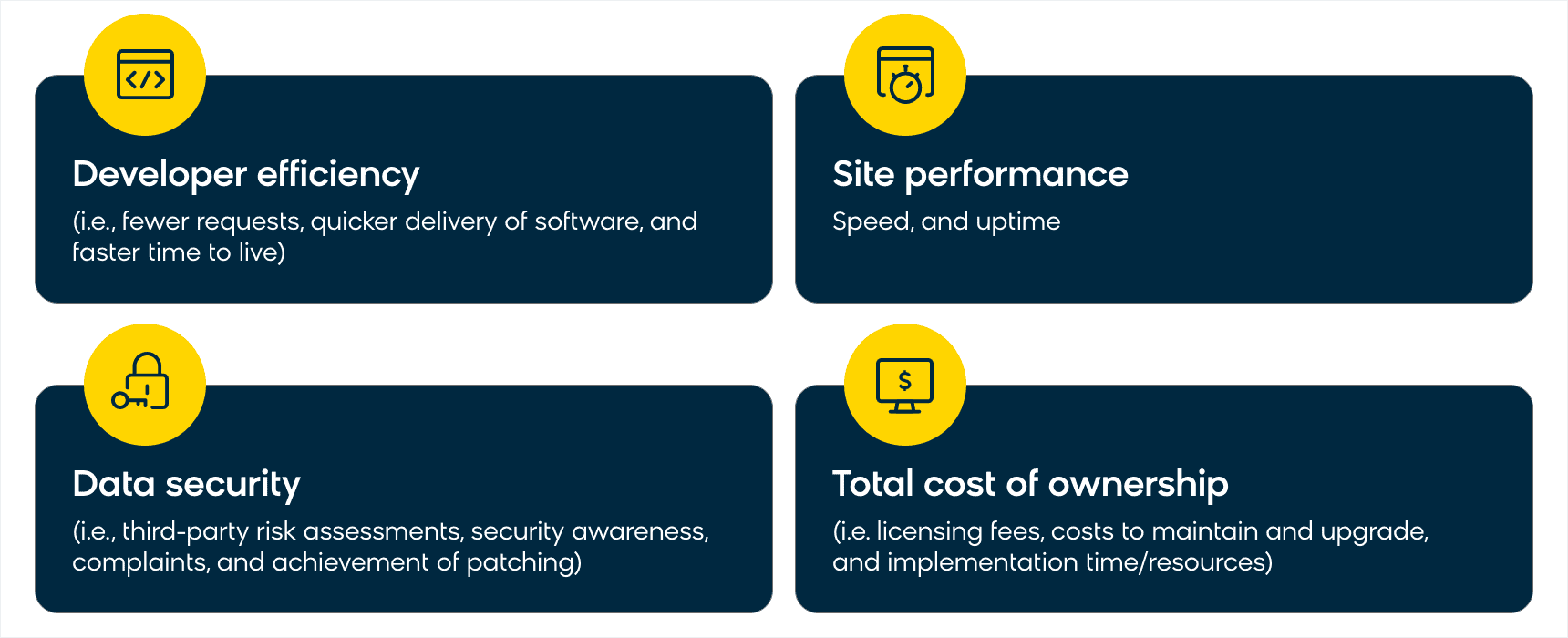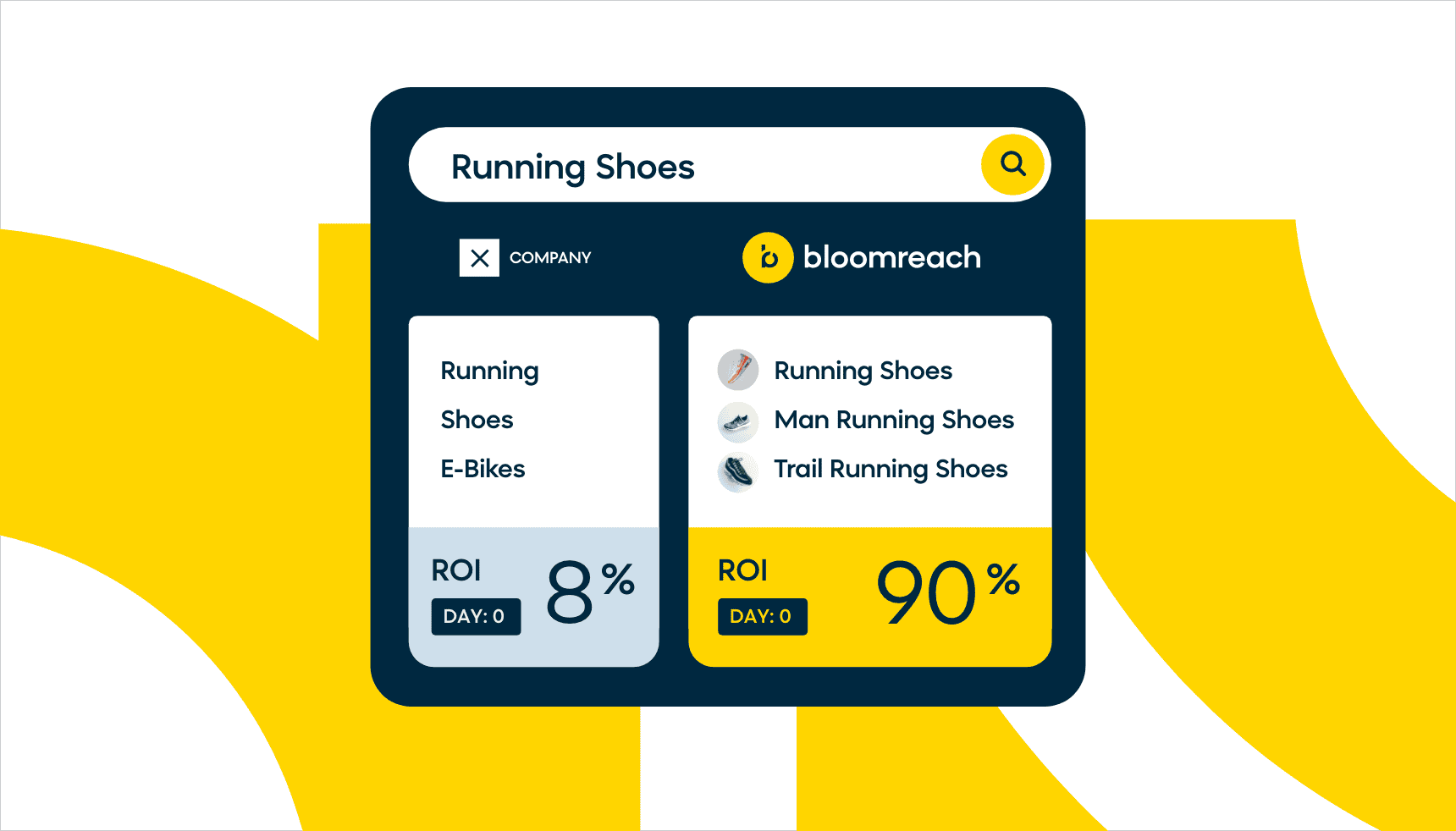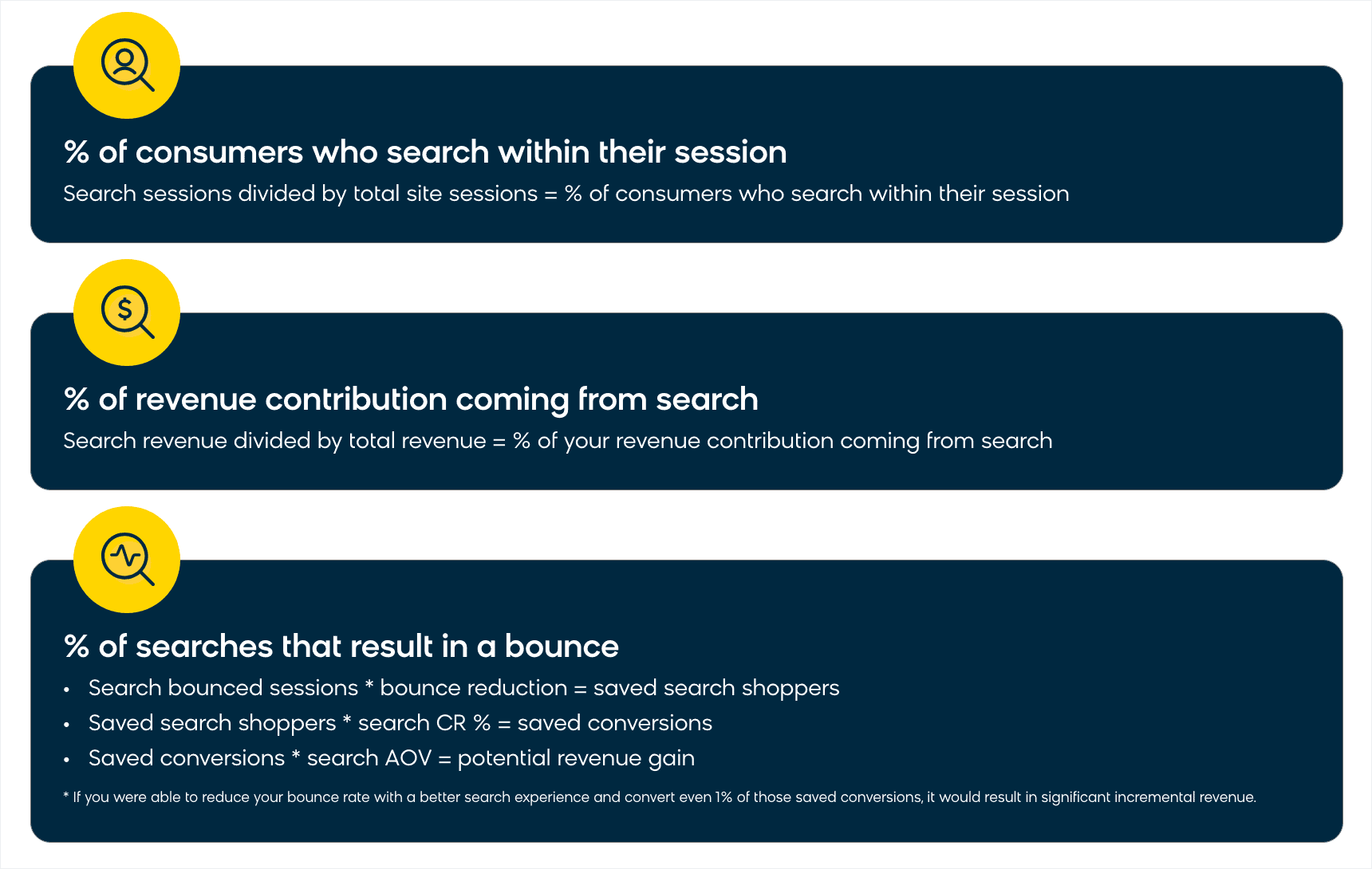Product search is a journey for every company. Still, businesses should strive to get to the same destination: presenting relevant, personalized, and meaningful search results that entice their customers or buyers to act. This is completely possible with the right search technology.
While there are dozens of ways to allocate your ecommerce budget, grow revenue, and develop continuous cash flow to support additional investments, product search should be at the top of your list. The reason? When done right, it converts at a rate 3x higher than browsing.
This means that 15% of your B2C site visitors using the search bar today should account for 45% of your revenue. Meanwhile, in B2B, 40% of search bar usage should account for 60% of revenue.
But how can you communicate product search’s value beyond revenue to get the CMO, CDO, CFO, or CTO on board with it as your next ecommerce initiative? Let’s delve further into where product search can make your online experience as great as the one in your store — and how to argue that case to your top executives.
Making the Case for Product Search to Your CMO/CDO/CFO:
First, identify the KPIs that matter to your CMO/CDO/CFO:
Then, consider the arguments you’ll likely hear from them:
- Customer queries are too complex to use search technology for our products or services. No machine could possibly understand all the nuances of human communication, right? Your CDO or CMO might worry that customer queries are too complicated for a search tool to optimize, resulting in a frustrating shopping experience for your customers.
- The optimization piece is too manual or automated for our tastes. When it comes to automation, there’s typically a “Goldilocks” scenario that occurs. Your CMO or CDO could argue that the search tool(s) under evaluation are either too manual (require extra labor) or too automated (disregard human intervention) and lack the flexibility and agility you need to present relevant results to your customers.
- The implementation timeline will be too strenuous for various teams. The last thing the C-suite wants to do is put extra demand on a historically overburdened department like Engineering. In addition to the Marketing department, this team might be stretched especially thin these days because of recent hiring challenges or labor cuts and unable to take on a new project.
- There’s no need to add another point solution to the mix right now. Along with the CMO and CDO, the CFO might be concerned about licensing and recurring costs — as well as the labor output — that come with implementing a search solution (i.e., how long does it take, and how many hours go into maintaining it?).
- We don’t see how a search tool relates to return on investment (ROI). Many ecommerce professionals don’t typically link a successful product search strategy to good ROI. They see a search bar more as a functional feature of the UX/UI strategy than a powerful tool that presents more relevant results to help customers find products.
Next, prepare for these roadblocks with the following rebuttals:
- There are tools on the market that demonstrate top-notch search relevance. Artificial intelligence (AI) will allow your search bar to understand your products on a deeper level and present them on the page in ways that make sense to your customer. Extensive dictionaries and multilingual capabilities can identify words and separate product types from attributes, like colors, sizes, cut type, or coating/finish. This combination of natural language processing (NLP) and machine learning (ML) is referred to as “semantic understanding.” Even if you start with bad or incomplete product data, the AI fills in the voids with additional information, as it learns over time and becomes highly knowledgeable about your catalog.
- You can keep it as automated or manual as you’d like. Merchandisers should use AI and automation to save time managing day-to-day issues in search, addressing long-tail searches, and fixing synonyms. It’s up to your merchandisers’ discretion to tweak algorithms to fit business goals — just consult best practices first! Whatever approach you choose, a worthwhile solution can lead to 80% less time spent tuning sites — and way less human error.
- Implementation times are relatively low for an integration-agnostic search tool. A good search tool is API-based and can easily plug in with your current tech stack and play nicely with other software solutions. Because of this flexibility, clients can be up and running in as little as six weeks and see results within four weeks after the initial onboarding. Talk about fast results!
- Don’t think of it as a point solution — it’s a part of your composable commerce strategy. A composable commerce approach enables companies to piece together best-in-class technology solutions from different vendors instead of relying on an all-in-one platform. If you’re not in the position to implement a full customer data platform (CDP) and digital experience platform (DXP) all at once, start with product search and build on your investment as you go.
- A search tool provides a fantastic return on investment. Pricing models for search allow your company to pay for what you use, instead of committing to a one-size-fits-all contract. By sharpening the pencil on your investment, your team will spend 30 to 50% fewer hours finding insights, diagnosing problems, and personalizing experiences, resulting in increases in conversion rates and decreases in search exits. Remember, it’s all about focusing on investments that add value to the consumer experience and are built to scale.
Finally, prep for your meeting with the CMO/CDO/CFO and ask yourself the following:
- What are some of the most common use cases for search technology?
- Will it allow us to make manual rule exceptions, like boosting and burying?
- Can we adjust the tool for seasonality or promos and sales?
- Can our company expect to see ROI on search right away? How?
- How does investing in product search support our future ecommerce initiatives?
Making the Case for Product Search to Your CTO
First, identify the KPIs that matter to your CTO:
Then, consider the arguments you’ll likely hear from the CTO:
- Development has limited resources. Teams might be more limited than usual because of recent hiring challenges or labor cuts. Because of this, the CTO may not believe their department has the time to consider a new implementation with a lot of commitment that could potentially result in needing extra manpower.
- The implementation timeline seems impossible. Going hand-in-hand with the above argument, the CTO could be concerned about the implementation timeline if their department is already overloaded. Since they typically oversee technical initiatives from the implementation to the management phase, the CTO might be worried about adding an extra project to the mix.
- They’re focused on UI/UX right now. The CTO might prefer to focus on ecommerce initiatives that firmly (and perhaps, more obviously) align with their department’s KPIs — including a stellar UX/UI strategy — which will improve site performance by eliminating navigation issues, increasing load times, and enhancing customer experiences overall.
- It doesn’t seem like the right tool for scalability, or We already have a search tool. CTOs might be concerned about the scalability of a search tool, especially when thinking of one from an enterprise standpoint. You might even have a search tool already. But what is your plan as your company continues to scale its catalog? Could your current tool (or no solution) support an influx of all those SKUs? Like you, C-suite members have a growth mindset and want to make sure that your next investment supports future success.
- Search technology is expensive! Enough said! CTOs are just as concerned with ROI as your Chief Financial Officer. They might not initially see the short- and long-term benefits of product search in comparison with other ecommerce initiatives on their to-do list, and may feel burdened by justifying such an investment and ensuring ROI.
Next, prepare for these roadblocks with the following rebuttals:
- Search actually makes teams more efficient. A worthwhile search tool will release the pressure valve on a historically overburdened department in most companies — Engineering. Also, your company will reduce the need for internal support from engineers and allow them to focus on the projects that help move the needle on your business by putting the power back in the hands of merchandisers. In fact, it only takes teams 30 seconds to find and fix search query problems when using the best search technology.
- The technology is easy to implement with an experienced search vendor. A good search tool is integration agnostic. This means it’s API-first and can easily plug in with your current tech stack and play nicely with other software solutions. As we mentioned, businesses investing in this initiative can be up and running in as little as six weeks on agnostic search tech, seeing results within four weeks after the initial onboarding.
- Search is the ultimate UX/UI opportunity. Product search can contribute to both “good” and “bad” digital experiences. For example, we all make typos while searching for products or services online, but your ecommerce search bar needs to be intuitive enough to recognize and filter misspellings (and even synonyms). Great search tools allow commerce companies to avoid null results, provide options that are more relevant, and experience a 5 to 10% lift in revenue per visitor!
- Scalability is even more achievable with search. If your company is using a search solution that is built or customized from the ground up, then it’s a huge pain to scale that infrastructure as your catalog continues to grow. By outsourcing search to an experienced technology vendor, your team will save an unbelievable amount of time, which can be used on other valuable ecommerce initiatives.
- Search is worth every penny and results in serious revenue. As we mentioned in the CMO/CDO/CFO section, search solutions often offer pricing models where you only pay for what you use. In the end, the investment will be worth it, as product search helps merchandising teams experience 30 to 50% fewer hours spent finding insights, diagnosing problems, and personalizing experiences with increases in conversion rate, decreases in search exits, and more. For IT, this means less dependence on your team in these areas.
Finally, prep for your meeting with the CTO and ask yourself the following:
- What is the total cost of ownership of a new search solution?
- Who is owning implementation and maintenance of the search tool?
- Is the search tool we’re currently evaluating integration agnostic?
- Can we expect to see ROI on search right away? How?
- Then, prepare the following equation(s) below:
If you find that a large percentage of your consumers are leveraging search — yet your search conversion rate isn’t 2 to 4x that of your category conversion rate — you’re leaving money on the table.
See results with access to a powerful, AI-backed search tool like Bloomreach Discovery. Make the case for product search as your next ecommerce initiative to your entire C-suite — complete with tangible proof that we’ll boost your bottom line. Ready to get started?





















